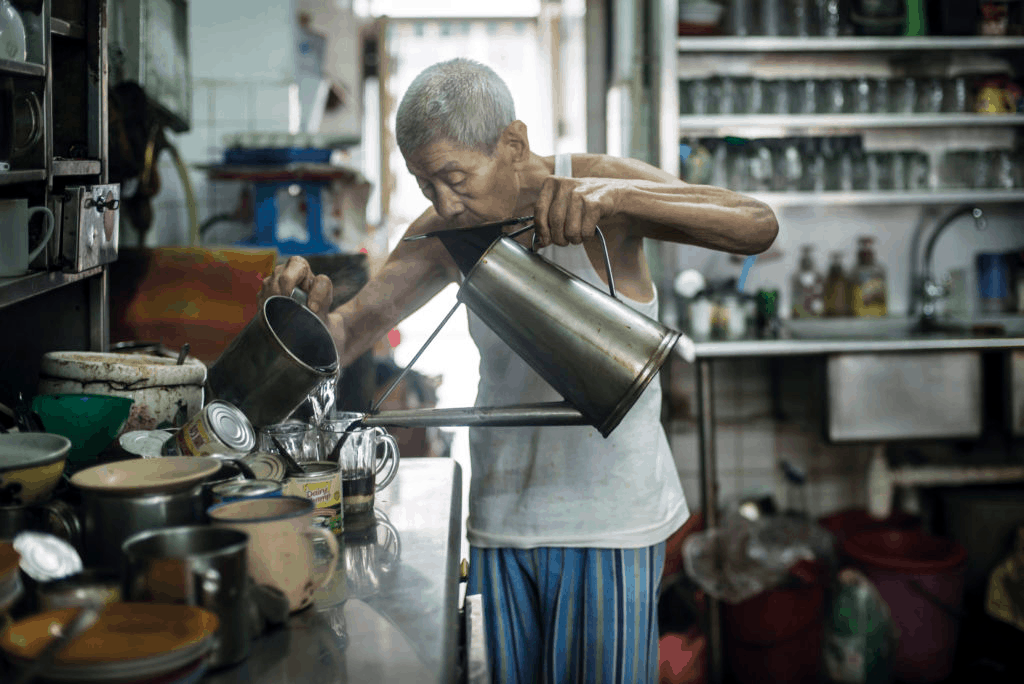Our vendors are retiring, but who’s taking over?
Craving some Hokkien Mee or Char Kway Teow? Just head down to the nearest hawker centre and grab yourself a plate of that mouth watering goodness. But what if I told you that hawker centres may slowly be disappearing, bringing with them the dishes that brought Singapore’s food culture to fame?
Blast to the past
Before you read on, let’s go back in time to see how hawker centres came to be…
1960s, along the Singapore River:
Source
Taking a look around, you’d see animals, trishaws and push-carts, with plenty of wares and goods on display. Vendors and customers chat in a variety of Chinese dialects, Malay and Indian languages, bringing life to the Singapore River. Lining the streets were hawkers offering market produce, cooked food and drinks to the passers-by. Street hawking enabled them to make a living, especially those without much education and skills.
But street hawking caused traffic obstruction and water pollution from careless garbage removal. Thus, our founding father Lee Kuan Yew started a clean-up mission, and relocated hawkers to proper premises. By the 1980s, all the hawkers had been resettled to hawker centres where amenities like water and electricity were readily available.
To protect the livelihood of hawkers, a condition had to be met when an agency wanted to redevelop a parcel of land. The condition was that a hawker centre had to be built there to house the hawkers that would be affected by the redevelopment. Examples of these are the Golden Shoe and Amoy Street food centres.
Hawker centres have a past, but will they have a future?
Today, we recognise that hawker centres offer more than just Kuay Chap, Satay or the all-time favourite, Or Luak (oyster omelette). They are social spaces that encapsulate our culture and heritage, and should definitely be sustained for generations to come.
However, there is a huge challenge surrounding the preservation of hawker centres:
The median age of present hawkers is 59 years old, a few years shy of the retirement age. But they have yet to find successors to keep the food culture alive.
Even having a passion for cooking, is not a big enough draw factor. The hot and stuffy environment leading to beads of perspiration trickling down your face is no match for a cosy 9-5 office job in an air-conditioned room that offers comparable pay. Not to mention the capital needed to purchase the equipment, fees for applying for a license and all the expenses involved in taking care of other administrative matters.
Between the present and the future:
To reduce the barriers to entry for aspiring hawkers, the Hawker Centre 3.0 Committee devised several initiatives, which have been approved by the Ministry of Environment and Water Resources (MEWR):
- Incubation stalls: The plan is to provide basic cooking equipment in these stalls, so the capital investment needed for the new hawker would be reduced. In this way, new hawkers can save cost in the long run.
-
Information Centre: Starting from scratch poses many problems, so the information centre will guide new hawkers in license application, regulatory rules as well as contacting suppliers.
-
Hawker Fare: In collaboration with People’s Association, a mentorship programme will be set up to enable veteran hawkers to impart culinary skills to new hawkers.
-
Skills training: Together with Institute of Technical Education, a short course will be developed for hawkers on business management skills.
To promote productivity, the Government’s new Hawkers’ Productivity Grant will reimburse stall-owners up to 80% of the qualifying cost of the equipment, up to a total of $5,000 within 3 years.
With all these new initiatives in place, it will become much simpler for aspiring hawkers to take the first step. Let’s hope that the committee’s plans will be successful in sustaining the hawker centre scene in Singapore, which undeniably captures the food culture that is so close to our hearts.

















